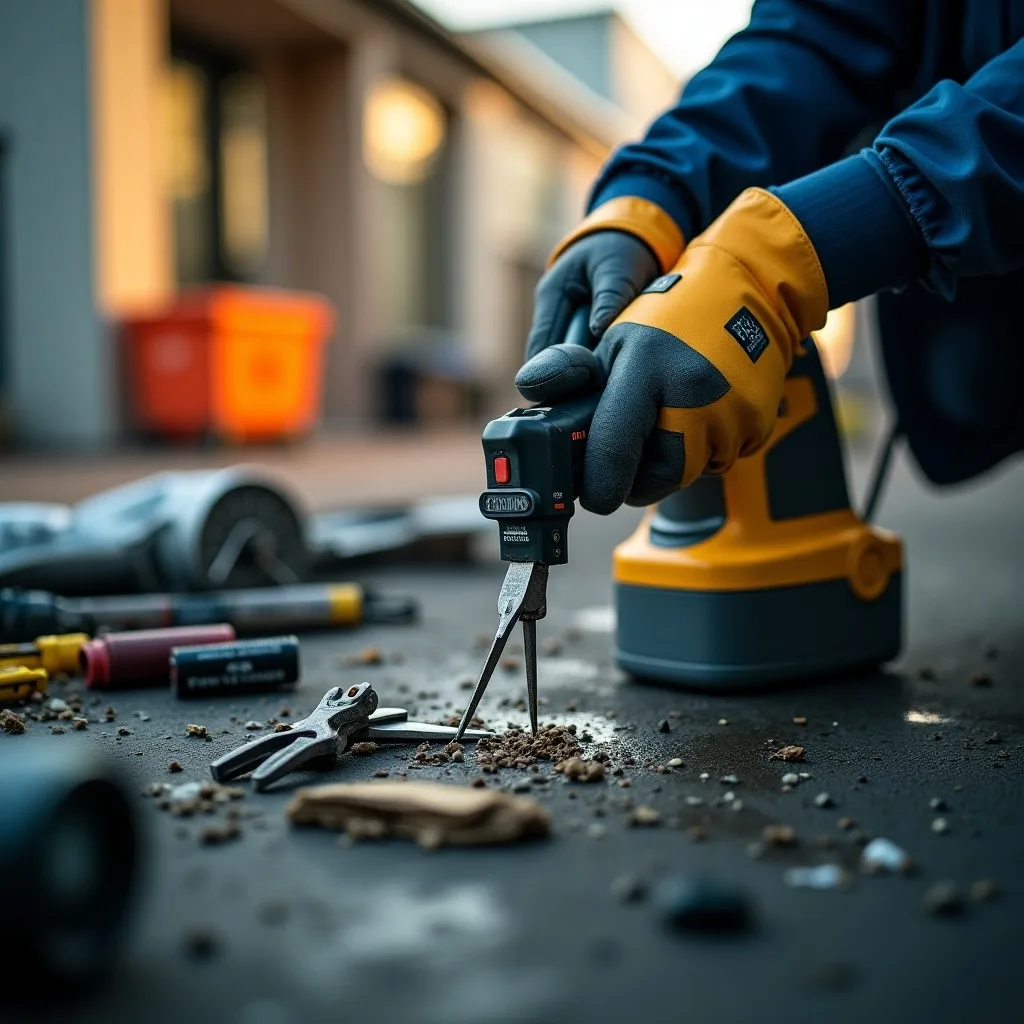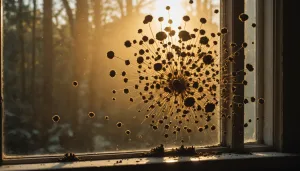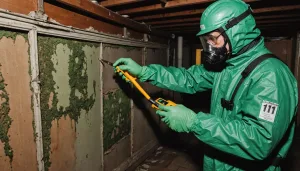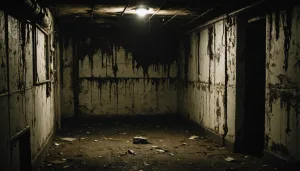Understanding how to identify common household molds is a crucial first step in maintaining home health and effectively performing mold removal. Molds are types of fungi that thrive in moist environments and can pose health risks such as allergies, respiratory issues, and more severe reactions in some individuals. Thus, accurately identifying the type of mold present in your home can help guide appropriate removal strategies.
The most commonly encountered molds in residential settings include Aspergillus, Cladosporium, and Stachybotrys chartarum, commonly known as black mold. Each variety has distinct characteristics, growth conditions, and health implications that homeowners should be aware of.
- Aspergillus: This type of mold has a powdery texture and appears in various colors, ranging from white and yellow to green. Aspergillus is commonly found on food and in air conditioning systems. While some species are generally benign, others can cause health issues, particularly in individuals with compromised immune systems.
- Cladosporium: Recognizable by its suede-like texture and dark green or black color, Cladosporium can grow both in warm and cold conditions. It frequently appears on fabrics, woodwork, and other damp surfaces. This mold can trigger allergic reactions and asthma attacks, making early identification and removal important.
- Stachybotrys chartarum (Black Mold): Known for its slimy black or dark green appearance, black mold thrives in water-damaged environments, particularly in damp areas with high cellulose content, such as drywall or cardboard. This mold is notorious for its potential to release mycotoxins, which can result in severe respiratory problems and other health issues if left unaddressed.
To better understand where these molds might commonly appear and the potential risks associated with them, consider the following comparison table:
| Mold Type | Typical Locations | Health Risks |
| Aspergillus | Air conditioning systems, foods, wall cavities | Allergies, respiratory infections (immunocompromised individuals at higher risk) |
| Cladosporium | Wood surfaces, fabrics, HVAC ducts | Allergic reactions, asthma |
| Stachybotrys chartarum | Water-damaged materials, cellulose-rich materials | Mycotoxins leading to respiratory issues, potential long-term health effects |
Identifying these molds is not just about sight but also recognizing the conditions that promote their growth. Moisture control, for example, plays a vital role in preventing all types of mold infestation. Regular inspections, especially in areas prone to moisture build-up such as bathrooms, basements, and kitchens, can help homeowners maintain a mold-free environment and ensure home health is not compromised.
Essential tools and safety gear for mold removal
Embarking on a mold removal project requires not only diligence but also the right set of tools and protective gear to ensure success and preserve home health. The process can be hazardous, so arming yourself with appropriate equipment can make the task safer and more efficient.
Before diving into the mold removal process, gather the necessary tools and protective gear. Here are the essentials you will need:
- Protective Clothing: Wear long-sleeved shirts and long pants to minimize skin exposure. Disposable coveralls offer an added layer of protection and can be easily discarded after the cleanup process.
- Gloves: Choose rubber, nitrile, or neoprene gloves to ensure your hands are protected from mold spores and cleaning solutions. This is especially important when handling bleach or other harsh chemicals.
- Eye Protection: Goggles or safety glasses should cover your eyes completely to prevent mold spores or debris from causing irritation or injury. It’s advisable to use those that fit snugly without ventilation holes.
- Respirator or Mask: A NIOSH-approved N95 respirator is crucial for filtering out mold spores from the air you breathe during the cleanup. Make sure the mask fits properly over your nose and mouth.
- Plastic Sheeting: Use this to cover and isolate the contaminated area, preventing mold spores from spreading to other parts of the house during removal.
- Scrub Brushes or Sponges: These will be necessary for scrubbing surfaces clean. Consider having various sizes to reach both large and small, tight spaces.
- Cleaning Solutions: A mixture of water and detergent can be effective for cleaning mold from non-porous materials. Alternatively, a household bleach solution or commercially available mold remover can be used for more resilient infestations.
- Vacuum with HEPA Filter: To remove small particles from the air and surfaces more effectively, a vacuum with a High-Efficiency Particulate Air (HEPA) filter is vital. These vacuums capture fine particulates that regular vacuums cannot.
- Dehumidifier: After removal, using a dehumidifier helps in maintaining low humidity levels, aiding in moisture control which is critical to preventing future mold growth.
- Air Purifier with HEPA Filter: To further ensure clean air quality and support long-term home health, use an air purifier to trap any remaining mold spores in the environment.
Having these tools not only protects you from possible health risks but ensures the mold removal process is conducted effectively and safely. Remember to maintain all equipment, regularly replace filters, and carefully dispose of any contaminated materials to foster a healthy home environment.
Step-by-step removal process
Embarking on the effective removal of mold in your home requires a systematic approach to ensure both the health of the space and the people dwelling within it. Mold removal isn’t merely about scrubbing away visible signs; it’s about ensuring a thorough cleanup that prevents recurrence and maintains home health. By following a meticulous, step-by-step process, you can effectively eliminate mold and reduce associated health risks.
Begin by isolating the contaminated area. Cover doors, vents, and other openings with plastic sheeting to contain mold spores that could become airborne and spread to other areas during the cleaning process. This crucial step helps in minimizing contamination in unaffected areas, maintaining overall home health.
Next, inspect the affected surfaces. Determine the extent of the infestation by checking all potentially impacted materials, like drywall, carpet, and wood. This will help you identify if any elements are beyond cleaning and require disposal. Materials that are significantly damaged by mold or are difficult to clean, such as absorbent fabrics, might need to be replaced entirely.
Start cleaning non-porous surfaces first. Use a mixture of detergent and water or a commercial mold removal cleaner on surfaces like tile and glass. Scrub with a sturdy brush or sponge to remove visible mold. This step ensures a deep clean that tackles the roots of the mold, not just the surface appearance, maintaining the hygiene of your home environment.
For porous materials, a more stringent approach is essential. Items like fabric, carpet, or unsealed wood might require additional treatment. In some cases, highly porous materials might be unsalvageable and need to be discarded. Remove these items from your home carefully to avoid spreading mold spores during disposal, helping to sustain a mold-free living space.
Dry the area thoroughly once the mold has been cleaned. Utilize fans and dehumidifiers to accelerate the drying process and eliminate residual moisture, which is crucial to prevent mold from returning. Mold thrives in damp environments, so keeping humidity levels low is key to preserving home health post-removal.
Finally, check and monitor the moisture levels in your home. Regular monitoring can help detect potential issues before they become significant mold problems. Implementing moisture control solutions, such as improving ventilation in high-humidity areas like bathrooms and basements, reinforces preventive initiatives against future mold growth.
This step-by-step approach not only facilitates effective mold removal but also ensures the health of your home environment. By diligently following these steps, you’ll create a living space that is resilient to mold, promoting a safer and healthier household for everyone involved.
Preventive measures to keep mold at bay
Maintaining a mold-free home environment goes beyond merely removing existing mold; it’s about implementing proactive measures to prevent mold growth from taking hold in the first place. By incorporating these preventive strategies, you can significantly enhance mold removal efforts and safeguard your home health.
One of the most pivotal aspects of mold prevention is controlling moisture. Mold thrives in damp conditions, so investing in moisture management is critical. Begin by resolving any existing leaks in roofs, plumbing, or walls as promptly as possible, because even minor leaks can create an ideal breeding ground for mold. Regularly inspect areas that are prone to water buildup, such as basements, attics, and crawl spaces, to catch potential issues early.
Maintaining proper ventilation is another key factor. Ensure that areas with high humidity, such as bathrooms and kitchens, have adequate airflow. Installing exhaust fans can help remove excessive moisture, lowering humidity levels and reducing the risk of mold growth. In some cases, it might be beneficial to also use a dehumidifier to keep indoor humidity levels below 60%, which is the threshold above which mold tends to proliferate.
In addition to managing moisture, consider adopting strategies to limit the availability of organic material that mold can feed on. Whenever possible, use mold-resistant products like drywall and paints during home renovations and improvements. These materials contain fungicides that deter mold growth, helping uphold your home’s health.
Regular cleaning and maintenance play an indispensable role in mold prevention. Regularly clean areas vulnerable to mold accumulation, including showers, window sills, and refrigerator drip pans. Use mold-inhibiting cleaners where applicable. Moreover, ensure your HVAC system is serviced routinely, and replace filters periodically to maintain clean air circulation throughout your home.
Monitoring indoor humidity with a hygrometer provides ongoing insight into the moisture levels within your space. By keeping a watchful eye on humidity, you can take quicker action if levels rise unexpectedly. Early intervention can significantly mitigate the risk of mold development, fostering a healthier living environment.
Lastly, if you’re in an area with high natural humidity or if your home has a history of mold issues, it may be wise to consult with a mold remediation professional. These experts can provide guidance on advanced prevention techniques tailored to your home’s specific needs, ensuring comprehensive protection against mold.
Incorporating these preventive strategies into your home maintenance routine is vital to extending the benefits of mold removal efforts and maintaining a mold-free, health-promoting environment. By staying vigilant and proactive, you can keep potential mold issues at bay and ensure the continued well-being of your household.
When to call a professional
In certain situations, calling in a professional for mold removal becomes not just a choice but a necessity to ensure both effective remediation and home health. While many minor mold problems can be addressed with a bit of DIY effort, more extensive infestations require the specialized skills and equipment that professionals bring to the table.
One scenario in which it’s wise to seek professional help is when mold covers a vast area—generally anything more than 10 square feet. Large infestations can be indicative of underlying issues, such as significant water damage or structural problems, which need to be investigated and resolved to prevent recurrence. Professionals have the expertise to assess the full scope of the problem and ensure comprehensive treatment, often uncovering issues that might go unnoticed by an untrained eye.
Another critical reason to contact a mold remediation specialist is the presence of black mold, or Stachybotrys chartarum. This type of mold is notorious for releasing mycotoxins, which pose serious health risks. Improper handling during removal can exacerbate the spread of these toxins, compromising home health. Experts use advanced techniques and protective equipment to handle black mold safely and effectively, minimizing health hazards.
Additionally, if you or anyone in your household suffers from severe mold allergies or conditions such as asthma, it’s prudent to involve professionals. The disturbance of mold spores during DIY removal could lead to an increase in airborne particulates, potentially exacerbating these health issues. Mold removal experts use containment methods to reduce spore spread, protecting the indoor air quality and safeguarding sensitive individuals within the home.
Situations that involve mold growing in hard-to-reach or sensitive areas, such as within HVAC systems or inside walls, also warrant professional intervention. Specialty equipment and techniques are necessary to completely remove mold from these parts of the home without causing further damage. Professionals are trained in executing such complex tasks, ensuring a thorough job is done.
In conclusion, maintaining a healthy home free from mold relies on effectively identifying, removing, and preventing mold growth. While DIY efforts can suffice for minor cases, understanding when to enlist professional mold removal services is crucial for safety and effectiveness. Implementing preventive measures and knowing when mold issues surpass your capacity to handle them ensures ongoing vigilance against mold, so you can protect your family’s health and your home’s integrity.





